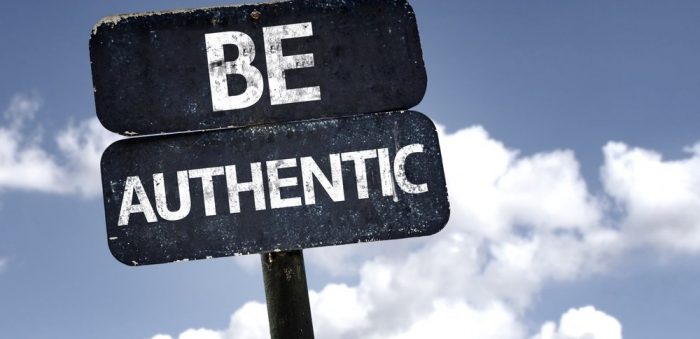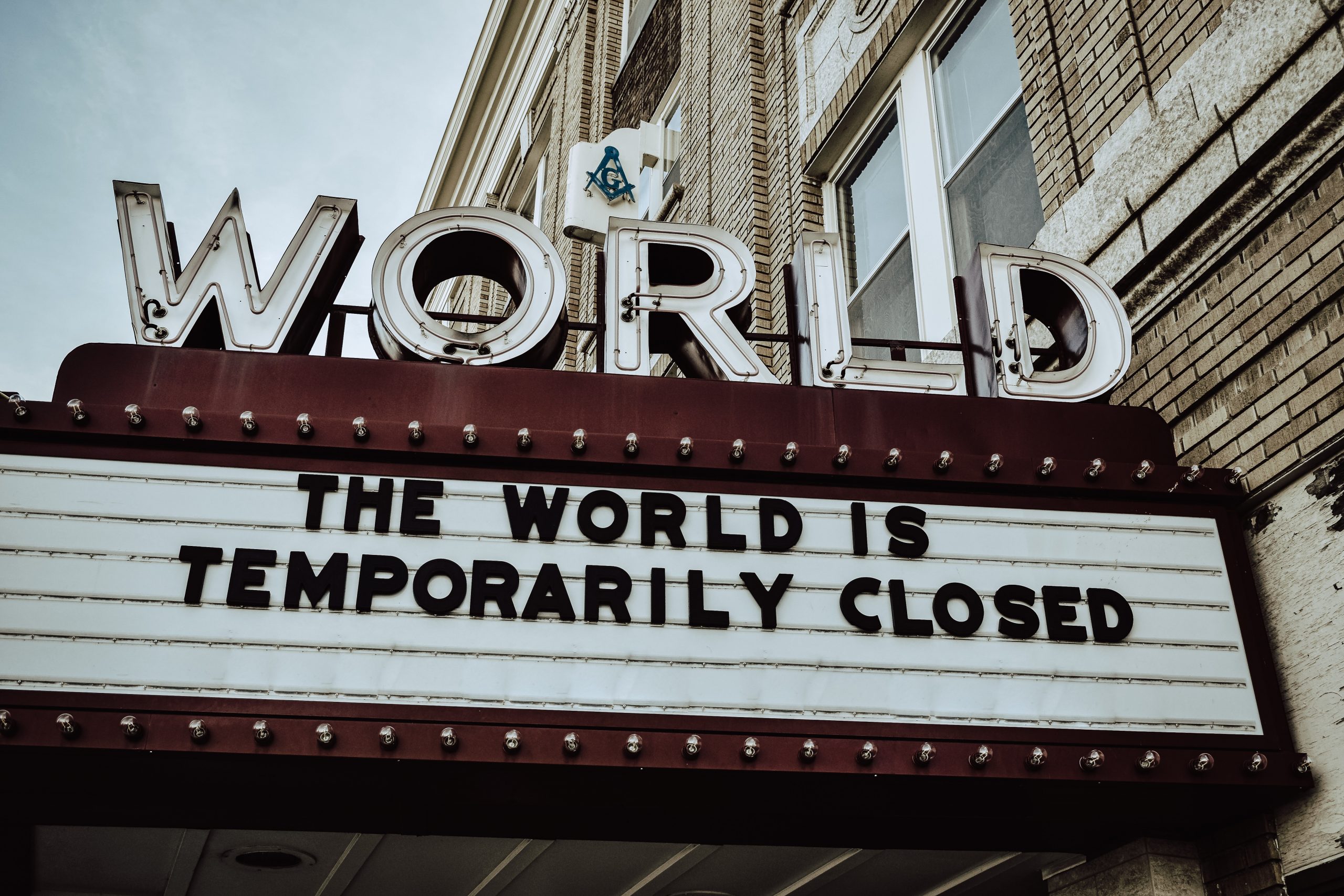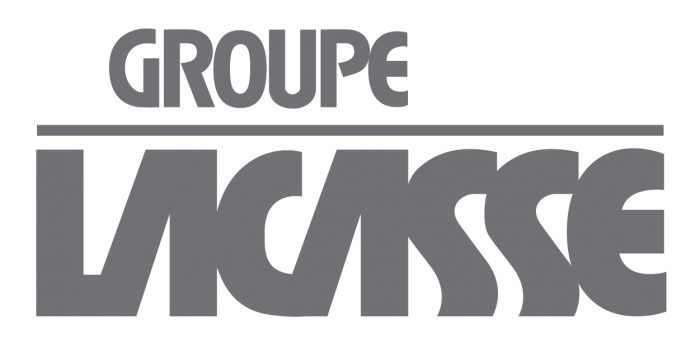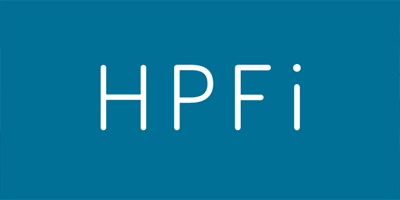In partnership with NeoCon, this is the first in a series collaborations with originally scheduled NeoCon 2020 presenters.
As the world has turned upside down over the past few months, we have had to make a myriad adjustments to our everyday lives. As we all hunker down in our at home, many are thinking about what the new normal of post-pandemic life will be about. Companies are re-thinking what their physical spaces need to support their staff and business goals. They are looking outside the buzzwords of collaboration, recruit and retain, and the dreaded “open office”. But, workplace design is bigger than this and demands more from all of us as we move to “What’s next”.

Jan Johnson, Vice President Workplace Strategy at Allsteel | Gunlocke and Jeff Leitner, Founder of Unwritten Labs, had been scheduled to present at NeoCon 2020 to discuss the unwritten rules that govern human behavior and interactions and how an understanding of that concept should inform design. Pivoting to the online experience and having the time and space to talk about this with the perspective of our current situation, the conversation changed as their research has moved to promote solutions that may work better in the workplace world that is developing as we move from pandemic chaos to whatever comes next.
How have you re-oriented your thinking and research to encompass all the challenges that we are collectively facing?

Jeff Leitner: We’re finding that all organizations – including designers’ clients — need a new north star. In the midst of unprecedented uncertainty — about jobs, companies, communities, and the economy — they need something to guide them to and through whatever’s next.
The old north stars won’t do it.. An article published before normal went off the rails this year said there were eight ways to increase productivity, including “be efficient” and “reduce distraction.” In just a few months, that benign advice seems antiquated, as workforces are distributed, and our lives are a cacophony of distractions.
Jan Johnson: We have these same challenges in workplace design. Our standard metrics—which are oriented to cost and space—like square footage per employee—don’t seem relevant now. And they never reflected how the built environment contributes to value creation.
Jeff Leitner: When the chaos was unleashed earlier this year, I looked around for clues as to which organizations would survive this economic meltdown and thrive on the other side. I looked for clues everywhere my clients and friends worked. And a pattern began to emerge. The organizations that seemed to be doing better than others had two things in common: cash and social cohesion.
Others are better qualified to talk about cash. But we should all be talking about social cohesion.
Jan Johnson: I already knew how important and powerful social cohesion is when Jeff and I started talking about it. Allsteel sponsored a study a few years ago which found social cohesion as the factor most tightly linked to knowledge worker teams’ productivity. And the more we talked, the clearer it became that social cohesion is that north star we need now — for both organizational success and workplace design.
Jeff Leitner: Here’s why social cohesion is so promising: in addition to being the best predictor of team productivity, it’s linked to better individual performance, more motivation, increased employee engagement, higher learning outcomes (though only among high IQ employees), and more resilience in the face of fear, stress and anxiety. Social cohesion is also negatively correlated with burnout and social loafing, which is scientist-speak for not pulling your own weight.
This is a gold mine of benefits. If there were a single food that made us more productive, improved our performance, increased our motivation, made us smarter, and helped us stay calm in the midst of chaos, we’d all eat it every day.
So what exactly is social cohesion? In short, it’s sticking together to chase a common goal. In sports, it’s that vague and mysterious “team chemistry” that explains how a group can win without the very best talent. Everywhere else, social cohesion is the science behind a successful culture. Consider the ubiquitous Maslow hierarchy of needs. Social cohesion is the beating heart of his model — the love, belonging, and esteem that connect basic human needs and security to ultimate self-actualization.
Scientists have been studying social cohesion for several decades, but not in relation to our organizations. Instead, it’s been a way to measure countries. In the most recent ranking of the world’s nations by social capital — which the researchers associated with social cohesion — the United States ranked number 142 out of 180. This places the world’s largest economy 141 slots behind Finland, 101 behind Canada, 57 behind Mexico, and one ahead of South Sudan. I’m guessing that given how chaotic everything feels right now, people probably aren’t surprised by this.
Jan Johnson: As for the workplace, there’s a lot of buzz about what it might look like when some or all of us return to the office. Let’s resist the temptation to make it a maze of plexiglass and higher walls around workstations and look to this new north star of social cohesion.
Jan and Jeff point out that elements of social science together with thoughtfully designed physical workplaces can increase the chances that social cohesion – a critical element of the successful workplace and business – are worth consideration as we move forward to re-think the places we will work in the future.
The Magic of Unwritten Rules
Jeff Leitner: There is a strong case for social cohesion as the new north star — to help us reshape organizations and workplaces for our present cluster of catastrophes. But we can only do it if we can measure social cohesion, find where it’s lacking, and know when we’re getting it right. And up to now, that’s been a real problem for scientists.
They’ve long tried to measure the cohesion of groups, teams, and organizations with what are called self-reporting questionnaires. But these self-reporting questionnaires — with questions like “On a scale of 1 to 5, how much do you trust your boss? — are problematic.

First, we don’t know how much we trust our boss. And even if we did, we probably don’t think about the world on scales of 1 to 5. Second, we would undoubtedly base our answer on all sorts of things that don’t have anything to do with trust, like whether we felt appreciated. That’s just human nature. Third, we’re never sure how honest to be on questions like that, even if we know the survey is anonymous.
Even with all that, the biggest problem for scientists is that self-reports don’t actually measure how groups think and feel; they just measure how one member of a group thinks and feels. But teams and organizations aren’t just collections of individuals. You can’t figure out how an organization works simply by asking each member of the organization how he or she works.
Organizations are complex, dynamic, living things, where what I do and say affects what you do and say and vice versa. Or in stuffy, scientist-speak cohesion is a relational emergent state that emerges over time as teammates interact.
We need to stop asking about the “I” and figure out how to ask about the “we.” Fortunately, there’s a new, more effective way to do this. Jan and I have been researching, writing, and touring the country talking about it for the past couple of years and our audiences agree it’s helpful.
The answer is unwritten rules. Every organization has dozens or hundreds of unwritten rules that dictate how things in that organization work. I’m not talking about formal policies. I’m talking about the kind of things you would confide to your best friend before he or she starts work with your company. Here are some unwritten rules from organizations we’ve talked to:
- If the boss can’t see you, you’re not really working.
- Act like this job is your everything.
- Titles don’t reflect who’s really in charge.
- The people who go to the bar with the boss get ahead.
Notice that three of the four examples have to do with management. That’s not a coincidence. Most unwritten rules have to do with management. That’s because unwritten rules are collective beliefs that run counter to formal policy. Let me say that another way because it’s important: unwritten rules are what we believe when we don’t believe formal policies. While a formal policy might state that the best producers who work hardest get ahead, an unwritten rule might say that the people who go to the bar with the boss get ahead. If that were the formal policy and unwritten rule in your organization, you know which one you’d believe.
That wouldn’t make you cynical. It’s just that unwritten rules have a bigger influence on us than formal policies do. Formal policies are transmitted through official structures, communicated through proper channels, and packaged in solemn language. And unwritten rules are whispered by our peers, in private conversations, and bundled up with emotion. Of course, we put more stock in unwritten rules; we’re people, not machines.
So what does this all have to do with social cohesion? Unwritten rules are the DNA of social cohesion. Unwritten rules tell us whether an organization has good cohesion or not-so-good cohesion. Unwritten rules tell us whether people trust the boss or work well together — far better than a self-reporting questionnaire can. If you want to measure social cohesion, find where it’s lacking, and know when you’re getting it right, figure out the unwritten rules.
Jan Johnson: Uncovering unwritten rules is a critical tool for strategists and designers.
While we’re accustomed to asking leaders how their organizations work, the problem is that leaders don’t know unwritten rules in their own organizations. For one, the people in charge play by a different set of rules than everyone else does — whether they know it or not. And two, unwritten rules are usually a response to the formal policies leaders have laid out. We must look to a healthy cross-section of workers for the organization’s unwritten rules.

I can’t say this strongly enough: finding unwritten rules has to be a part of a robust quantitative and qualitative data collection/needs analysis/programming (whatever you choose to call it) process. Exploring how workers really work will not only give us their functional requirements, it’ll give us profound insights into interdependent behaviors and experiences — and get us much closer to the “we.” Without these insights, we cannot help our clients strengthen social cohesion.
Life might not be fair, but our organizations can be
Jeff Leitner: You don’t need to know or care about football to notice there’s something odd about the National Football League. You can see it if you turn on a game and watch who’s stalking the sidelines in a sweater or a sportscoat. You can see it on the news if you catch who’s addressing the media. Chances are particularly good — just over 90 percent — that the head coach will be white.
If we weren’t talking about the NFL, this wouldn’t be a problem. About 10 percent of head coaches are black in a country where about 13 percent of the population is black. That’s not too bad, especially when you consider that African Americans only comprise three percent of executives across all other organizations in all other industries.
But we are talking about the NFL, where 70 percent of the workforce is black. That means that no matter what the NFL says, it’s not fair. Its best employees, no matter how smart, talented, and hardworking they are, stand virtually no chance of being promoted to the top job.
That’s the kind of problem that makes it impossible to build social cohesion — which is a key to everything your organization cares about, including productivity, performance, motivation, engagement, learning, and dealing with stress. So if you’re not inclined to solve a problem like this just because it’s the right thing to do, then do it because it will greatly enhance your organization’s odds of success.
The first of four critical dimensions of social cohesion Jan and I talk about is fairness, which means that an organization believes that its leadership is evenhanded. Fairness has four key attributes:
- Equal opportunity: Are you really giving everybody the same chance to succeed or are you just saying you are?
- Impartial treatment: Are you rewarding and punishing the same things for everyone or are you playing favorites?
- Consistency: Are you predictable or all over the place? Fairness is one of those qualities that has to be universal to exist at all. In other words, you can’t be fair if you’re only fair 90 percent of the time.
- Transparent decision-making: Do employees know why you’re doing what you’re doing or is it mystery to them?
Let me clarify something about fairness. It doesn’t mean that every employee is treated identically. That makes no sense. Every employee is differently equipped, prepared, qualified, and committed. But every employee should have the opportunity to do the most with what they have.
Employees are perceptive. If you’re not fair, they’ll know it. They probably won’t tell you because, well, you’re not fair and it will come back to haunt them. But they’ll tell each other what’s really going on through unwritten rules about how to succeed in your organization — rules like these:
- Inappropriate jokes are OK if the boss does it.
- Don’t upset the old boys club.
- If you have kids, you get weekends off.
- Be sure to invite women and minorities to client meetings.
Unwritten rules like those are a giant flashing sign that your organization has problems, specifically problems with being fair to its employees. Problems like that will not only disincentivize your employees but they will sully your reputation in the marketplace — probably worse than any other non-felonious problem you can have.
In organizational management, there’s only one strategy to increase fairness: do everything you can to be fair. The unwritten rules will give you the roadmap.

Jan Johnson: Like unwritten rules, environmental cues are more powerful than written rules and can reinforce behaviors that increase social cohesion. We believe what we see and experience more than what we hear and read.
I’m a big advocate of activity-based planning. It’s about the “we” and helps us design spaces that support the full range of functional and behavioral activities — which differ from team to team. Accounting and software development are quite different and with an activity-based approach, they can have exactly what they need.
Activity-based planning to build social cohesion is better than both the one-size-fit-all approach which requires people to adjust to space, rather than space adapting to its users — and the status-based approach, which reinforces entitlement and ultimately decreases social cohesion.
Our organizations must get real
Jeff Leitner: Earlier in my career, I was vice president of a small consulting firm. For reasons I don’t recall, we were having cash flow problems. So the president suggested the executive team forgo our paychecks for a while to ensure that everyone else in the company got paid. We all agreed, and I remember being proud to do it.
But about two months in, I returned from a long weekend to find that while everyone else on the executive team was forgoing our paychecks, the president wasn’t. He was paying himself just as often and just as much as he ever had. That was a heck of a job, but I resigned that day.”
Whether you would have resigned yourself, you undoubtedly get why I did. There’s something about discovering that things are quite different than they seem that rocks us and leads us to question everything around us. Can we trust the people we thought we could trust? Are we really in this together like we thought?
In a world of spin and overstatement, we’re sadly accustomed to reading and listening skeptically. But that inauthenticity is a big problem when trying to build social cohesion — which is a key to everything your organization cares about, including productivity, performance, motivation, engagement, learning, and dealing with stress.
So the second critical dimension of social cohesion that Jan and I talk about is authenticity, which means that an organization believes that its leaders mean what they say.
The four key attributes of authenticity are:
- Clarity — Are you being clear about what you expect, or do you leave expectations just fuzzy enough so that you can be impulsive later?
- Completeness — Are you telling employees everything they need to know or are you just giving them part of the picture?
- Straightforwardness — Are you saying what you mean or are you intentionally leaving employees with a misleading impression?
- Consciousness of power — Are you mindful that by being in charge, what you do and say carries a disproportionate amount of weight. No, you’re not just part of the gang.
If you say in formal policies, town hall meetings, or one-on-one conversations that you don’t care when employees get to work in the morning, that has to be true. You can’t then nick employees in performance reviews or deny them promotions and raises because they come in a half hour later than everyone else. If you say in the mission statement and on the company website that you prioritize quality work above everything else, you can’t penalize employees for taking the time to get everything right.
When leaders say one thing and hold employees accountable for another, it gives rise to unwritten rules. You’ve heard rules like this:
- Don’t be honest about why you’re calling off work.
- Never leave the office before the boss does.
- Optional events are not really optional.
- When the boss says, “It’s your call,” it isn’t.
These rules are red flags that an organization’s leadership is inauthentic and a giant obstacle to building social cohesion. And notice that inauthenticity has nothing to do with whether we’re back in the office or working remotely — inauthenticity is a problem that permeates any and every working arrangement.

Jan Johnson: The workplace can also help organizations be authentic.
Designers have two responsibilities: help clients use space to send authentic cues and stop them from using space to say things they don’t really mean.
It starts with digging into the unwritten rules, which tell us about workers’ authentic experiences. We need to respect what we learn and use it to balance out what we hear from leadership. If we don’t, we’ll design spaces that are inconsistent with how organizations work, which will ultimately decrease social cohesion.
We then need to pay attention to what artifacts mean. Do glass walls really represent transparency, like leadership says, or are they used to keep an eye on employees? Do ping pong tables build camaraderie or send a fake signal about playfulness? Do leaders really believe employees are their greatest asset or are they prioritizing real estate efficiency over worker experience?
We’re All in this Together or At Least, We Should Be

Jeff Leitner: About 10 years ago, I launched a project in which I’d invite really experienced strategists, scientists, artists, and other intimidating people to tackle social problems. We’d get together for one day to work with a prominent organization, like NASA, TED, or the U.S. State Department. And nobody — not me and not anybody I invited — got paid.
So when the project started showing up in people’s bios and on their LinkedIn pages, I was confused. They participated for a single day and were paid nothing. But there it was, alongside their already impressive credentials. I didn’t understand until I started digging into social cohesion.
The third critical dimension of social cohesion that Jan and I talk about is partnership, which is the degree to which employees in your organization are interdependent. The enigmatic basketball coach Phil Jackson said it this way, “The strength of the team is each individual member. The strength of each member is the team.” The six key attributes of partnership are:
- Receptivity: Do employees really listen and take in each other’s ideas or just nod and do what they were going to do anyway?
- Reciprocity: Do employees naturally share ideas, efforts, resources with each other or hoard and keep score?
- Frankness: Are employees candid and straightforward with each other or are they playing office politics?
- Shared Obligation: Do employees believe that they should have each other’s backs or believe it’s every person for themselves?
- Shared Benefit: Do employees believe they succeed when everyone succeeds or believe success in your organization is a zero-sum game?
- Psychological Safety: Do employees believe they can speak up or fear they’ll be mocked or degraded?
When we create the right environment — like I did accidentally with those one-day, no-pay projects — people bond to the organization, the work, and each other. When we don’t, it gives rise to all sorts of problematic unwritten rules like:
- Be sure to talk about how busy you are.
- Act like you know what you’re talking about.
- We want your creative contributions, but not too much.
- Just do it yourself.
I wish unwritten rules like these were unfamiliar, but I’m willing to bet you have encountered them somewhere along the way. I absolutely have. But it doesn’t have to be this way.
Jan Johnson: Knowledge work is a team sport. Workplace strategists and designers came to understand this a while ago and have been transitioning away from the emphasis on individual space. Remember when private offices and workstations were 80 percent of the floorplan?
We need to keep pushing forward. Even though half the average employee’s day is spent in solo work, the other half is spent interacting and collaborating with coworkers. For example, the increasingly popular agile development process relies on teams toggling back and forth between precise, linear work done individually and highly ambiguous work done collaboratively. Their workplaces need to provide the full range of spaces and tools they need, like forms of visual persistence to map their processes and capture progress, priorities, and next steps.
Teams might require tech-rich spaces (and platforms like Trello) that support scrum-like sessions that let others see the work in progress; or project rooms that support cross-functional, months-long projects. These forms of team expression and transparency also tick the authenticity dimension of social cohesion — if this isn’t used to micro-manage teams.
Returning to Jeff’s basketball reference, socially cohesive teams know what plays they’re running and what each player’s doing. When we explore teams’ unwritten rules, we understand how they work and design more relevant spaces.
When We Belong, We Prosper

Jeff Leitner: It might be a weird time to bring it up, as we’re in the midst of a pandemic, but a former U.S. Surgeon General says that loneliness is a public health crisis. Or maybe it’s a perfect time to bring it up, as so many of us are working from home or not working at all.
“Many people feel that the folks they’re working with are work colleagues, but they wouldn’t call them friends. They wouldn’t describe them as people they can trust. And there’s a real lost opportunity there, because when people have strong connections with the people, they’re working with that can not only improve productivity and the overall state of the company, but it can also improve their own health.”
The fourth and final dimension of social cohesion is belonging, which is the degree to which employees feel accepted and supported. Here are its critical elements:
- Collective Interests: Are employees chasing the same goals or is everybody running their own race?
- Validation and Affirmation: Does your organization signal to employees that they’re important to what you’re doing or just pay lip service to the idea?
- Valuing the Group: Does your organization treat its own better than outsiders?
- Encouragement of Employees’ Whole Selves: Can employees be themselves in your organization or are they discouraged from bringing that into work?
- Encouragement of Professional Growth: Does your organization push employees to maximize their professional potential or just use people to do what needs doing?
- Encouragement of Personal Integrity: Does your organization allow employees to be true to their values or expect them to swallow their concerns?
Big, bold declarations from leadership — either captured in formal policies or promised at company meetings — don’t tell you much about how an organization really works. Too many organizations have tried to use shortcuts like mission statements to transform themselves in employee paradises, where everyone is fulfilled and happy to be there. Of course, that never works. You need only surface a few unwritten rules to discover that people feel like they don’t belong, like:
- Don’t stick your neck out.
- If the boss wants to gossip about people in the office, do it.
- If you use all of your paid time off, you’re not serious about your career.
- Never say what’s really on your mind.
Solving this problem — the employees’ sense that they don’t belong — is hard. It requires dialing up the other dimensions I’ve talked about fairness, authenticity, and partnership. But in the meantime, there is something you can do. Identify something the organization is doing to signal that employees aren’t important and stop it.
There are hundreds of these things, such as celebrating people who don’t take time off, pitting one group of employees against another, raving about another organization’s employees, and taking employees’ contributions for granted. If this sounds like being a good parent, it should. The sense of belonging is an intensely personal feeling — maybe the most personal feeling — and should be addressed with care.
Jan Johnson: Our workplaces can enhance belonging. Environmental psychology tells us that encouraging teams to exercise “ownership” or spatial identity over their neighborhood — perhaps by displaying artifacts that represent their interests or work-in-progress — is highly correlated to performance.

That means we designers can’t be precious about our designs; these aren’t our environments and we can’t insist they stay pristine. Teams and whole organizations should use the spaces the way they need to. Take your photos before move-in and then enjoy watching those spaces come to life.
Individuals also benefit from personalizing their spaces, even if that means Star Wars memorabilia or cat memes, because it lets them bring their whole selves to work — which in turn, helps them build rapport, and feel they belong. Brene Brown says it beautifully, “True belonging doesn’t require you to change who you are; it requires you to be who you are.”
All images from Unsplash or Pinterest.
As part of NeoConnect 2020, this is the first article in a six-part series of collaborations with originally scheduled NeoCon 2020 presenters. Read the second article featuring Patricia Rotondo and Diana Araoz-Fraser here, the third featuring Rebecca Milne and Scott Fallick here, the fourth, part one of our NeoConnect webinars here, the fifth, part two of our NeoConnect webinars here, and the sixth featuring Brent Protzman here.
Thank you to our NeoConnect sponsors:






